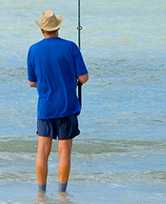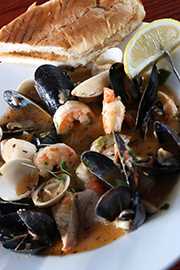Prevention Tips

Reduce your risk of vibriosis by following these tips:
- Don’t eat raw or undercooked oysters or other shellfish. Cook them before eating.
- Always wash your hands with soap and water after handing raw shellfish.
- Avoid contaminating cooked shellfish with raw shellfish and its juices.
- Stay out of brackish or salt water if you have a wound (including cuts and scrapes), or cover your wound with a waterproof bandage if there’s a possibility it could come into contact with brackish or salt water, raw seafood, or raw seafood juices. Brackish water is a mixture of fresh and sea water. It is often found where rivers meet the sea.
- Wash wounds and cuts thoroughly with soap and water if they have been exposed to seawater or raw seafood or its juices.
- If you develop a skin infection, tell your medical provider if your skin has come into contact with brackish or salt water, raw seafood, or raw seafood juices.

If you are in a group more likely to get vibriosis:
- Wear clothes and shoes that can protect you from cuts and scrapes when in brackish or salt water.
- Wear protective gloves when handling raw seafood.
Tips for Cooking Shellfish
 Before cooking, discard any shellfish with open shells.
Before cooking, discard any shellfish with open shells.
For shellfish in the shell, either:
- Boil until the shells open and continue boiling 5 more minutes, or
- Steam until the shells open and continue steaming for 9 more minutes.
Only eat shellfish that open during cooking. Discard shellfish that do not open fully after cooking.
For shucked oysters, either:
- Boil for at least 3 minutes,
- Fry in oil for at least 3 minutes at 375° Fahrenheit,
- Broil 3 inches from heat for 3 minutes, or
- Bake at 450° Fahrenheit for 10 minutes.
- Page last reviewed: May 12, 2016
- Page last updated: August 23, 2017
- Content source:


 ShareCompartir
ShareCompartir